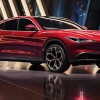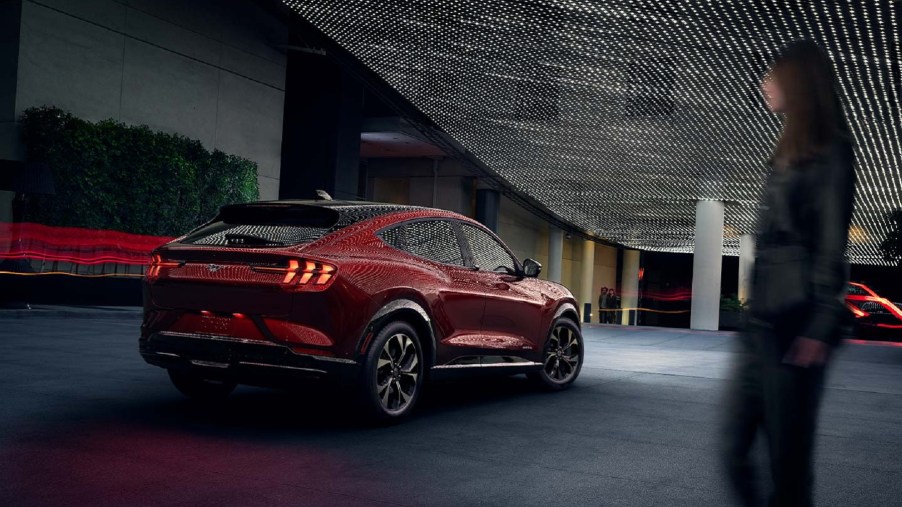
How Does the Ford Mustang Mach-E Compare To a ‘Real’ Mustang?
The Mustang Mach-E’s name is one of the biggest sticking points with the Ford EV. Ford Mustang fans—and not a few automotive critics—often claim that the Mach-E is just borrowing the pony/muscle car’s name. But as it turns out, the electric crossover isn’t dropping names just to grab sales. Because the Mach-E channels more than a bit of the Mustang spirit.
The 2021 Ford Mustang Mach-E Premium AWD can almost match a Mustang EcoBoost HPP’s speed
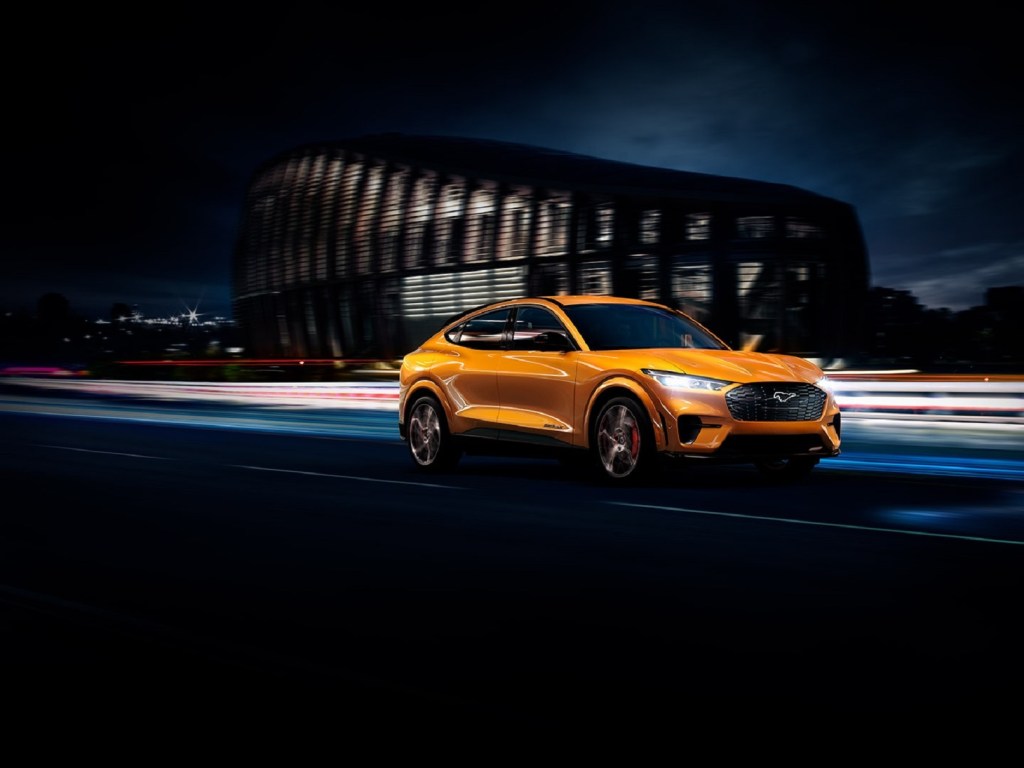
On paper, the fastest Ford Mustang Mach-E model is the yet-to-be-released GT Performance trim. With two electric motors rated at a combined 480 hp, the AWD EV goes 0-60 mph in a claimed 3.8 seconds, MotorTrend reports. However, even in a lower trim, the Mach-E is fairly quick.
Car and Driver recently tested what it calls “the quickest of [the] currently-available models.” Specifically, a 2021 Ford Mustang Mach-E ER Premium AWD model. The ‘ER’ indicates the extended-range 88-kWh battery pack. And in Premium AWD form, the Mach-E has two electric motors with a combined 346 hp and 428 lb-ft. That’s enough to let the 4856-lb electric crossover go 0-60 mph in 5.1 seconds in Car and Driver’s hands. The ¼-mile passes in 13.8 seconds.
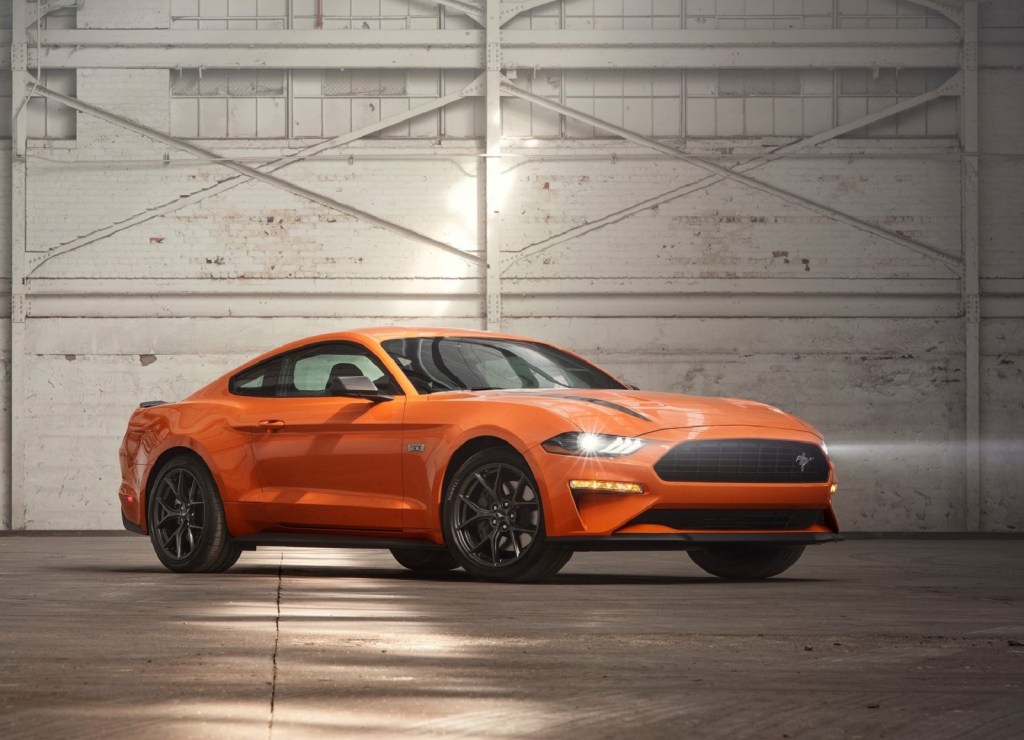
The 2020 Ford Mustang EcoBoost High Performance Package is actually out-gunned by the Mach-E. In HPP trim the RWD car’s 2.3-liter turbocharged four-cylinder engine makes 332 hp and 350 lb-ft, MT reports. However, while it’s down on power, the 6-speed-manual Mustang EcoBoost HPP is over 1200 pounds lighter than the EV, Car and Driver reports.
But with the manual, the Mustang HPP is only 0.1 seconds faster to 60 mph. And in Car and Driver’s hands, it only runs the ¼-mile 0.2 seconds faster. Plus, based on Car and Driver’s tests with non-HPP Ford Mustang EcoBoosts, the 10-speed automatic would likely only shave another 0.1 seconds from the 0-60 mph time.
So, while the Ford Mustang Mach-E may be slow to charge, it’s not significantly slower than an EcoBoost Mustang. At least, not in a straight line.
How does the driving experience compare between the Ford Mustang Mach-E Premium and Mustang EcoBoost HPP?
Naturally, being an AWD car, the Ford Mustang Mach-E isn’t going to drive exactly like the RWD Mustang. But again, in terms of its overall dynamics, it’s not terribly far off.
Admittedly, the Mustang Mach-E isn’t flawless. Both Roadshow and MT note that while the regenerative braking is excellent, it doesn’t mesh smoothly with the physical brake pedal. When you actually have to brake, there’s a marked transition between the regen and mechanical zones. Plus, unlike the ‘real’ Ford Mustang, the electric crossover plays a fake engine note inside the cabin. However, with it off, the interior is almost too quiet for something with a Mustang badge, Car and Driver reports.
But that being said, in the corners, the Ford Mustang Mach-E feels “like a Mustang,” MT reports. It has accurate and quick steering, and a neutral, well-set-up chassis. It can’t hide its extra weight, MT reports, but it’s a fun EV to drive on a racetrack. And in the real world, it’s capable of “effortless pace,” Autoblog reports.
Truth be told, the Ford Mustang EcoBoost is the better choice for performance-car shoppers. It’s lighter, lower, and with the HPP and Handling Package equipment, a genuine “road scalpel,” Car and Driver reports. Plus, the Handling Package adds adaptive dampers, so the muscle car still has decent ride quality. But the greater focus on performance means losing out on some of the Mach-E’s “daily usability,” Roadshow reports.
Does the EV live up to its pony-car nameplate?
Interestingly, Ford didn’t benchmark the Mustang Mach-E against the regular Mustang during the EV’s development, Motor1 reports. Instead, the Blue Oval had the Porsche Macan in mind when it was dialing in the crossover’s dynamics.
But putting the Mustang name on the EV did drive the development team into making sure the crossover could handle properly, Road & Track reports. Considering the team had to practically pry a prototype from executive Bill Ford, the mission was at least somewhat accomplished.
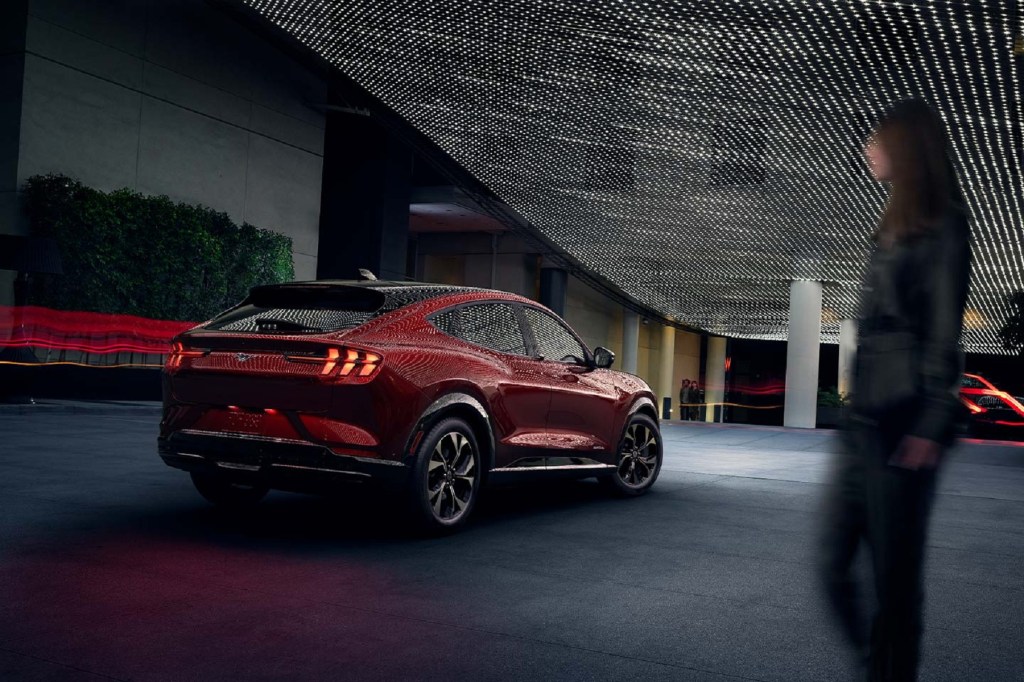
So, is the Ford Mustang Mach-E a ‘real’ Mustang? To quote Car and Driver, if what you want is “a roaring engine and an athletic chassis capable of carving up back roads,” then no, it’s not. And while they can be fun to drive, crossovers’ designs put them at a handling disadvantage. However, if your perception of a Mustang is a stylish and reasonably-fast car, then the Mach-E definitely belongs in the family.
Follow more updates from MotorBiscuit on our Facebook page.

